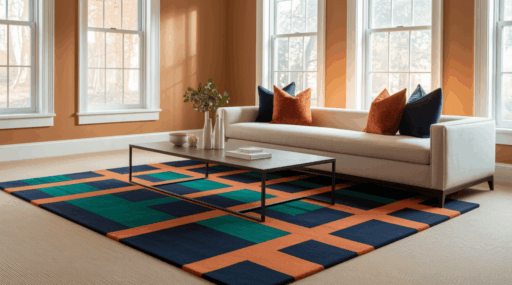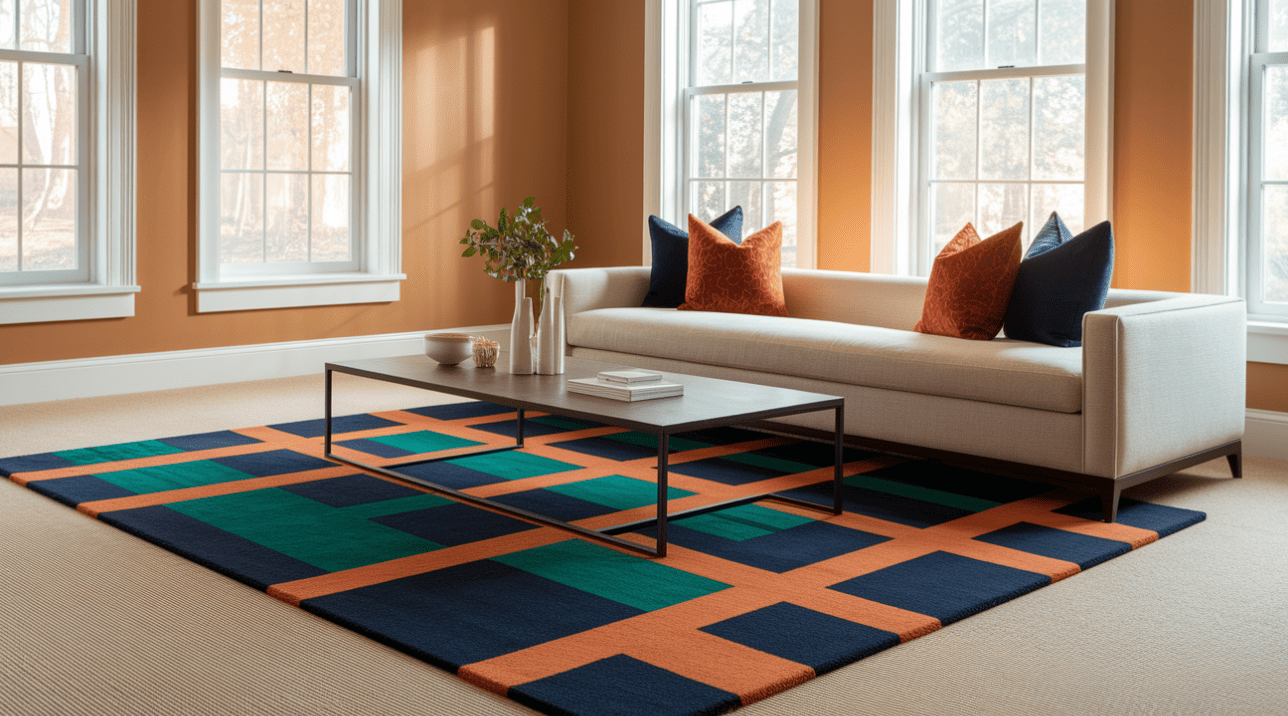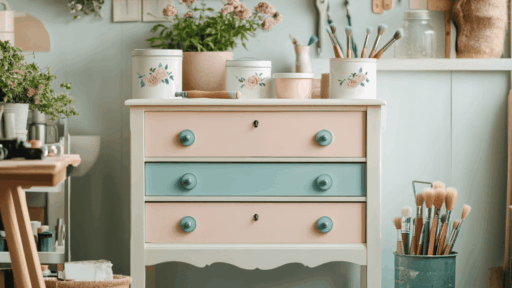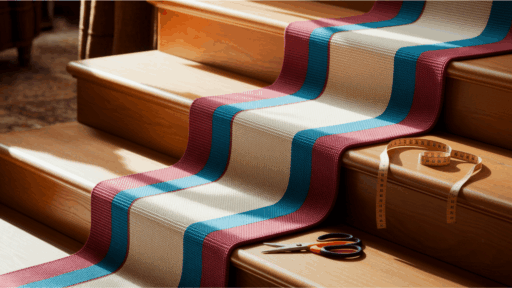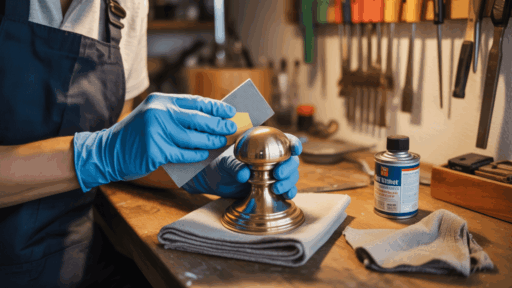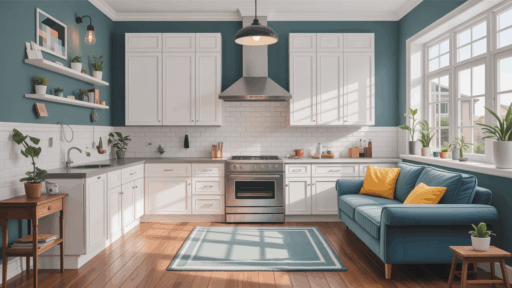Have you ever noticed how designers often place a rug right on top of a carpet and wondered if you could try it, too?
Layering a rug on carpet is one of the smartest decorating tricks that doesn’t require a big budget or major renovations.
Think of it like adding a scarf to your outfit – it instantly adds color, pattern, and personality to a room without changing everything!
A well-chosen rug can divide open spaces into cozy zones, hide boring or worn carpet, protect high-traffic areas, and add beautiful texture to your home.
Best of all, you can completely refresh a room’s look for much less money than replacing all your carpeting.
It’s an easy weekend project that makes your space feel designer-styled without hiring a professional.
Why Layer a Rug on Carpet?
Ever wondered why people put rugs on top of carpet?
It’s actually a smart design trick!
Placing a rug on carpet helps divide up big open rooms, making each area feel special.
Got boring beige carpet?
A colorful rug adds fun patterns and personality without changing your whole floor.
Rugs also protect your carpet in busy spots like hallways and living rooms where people walk all the time.
If you’re tired of your carpet but don’t want to spend big money replacing it, a new rug gives you a fresh look for much less.
Plus, rugs add extra coziness and interesting textures that make any room feel more welcoming and finished.
It’s like giving your carpet a stylish friend!
Choosing the Right Rug for Carpet Layering!
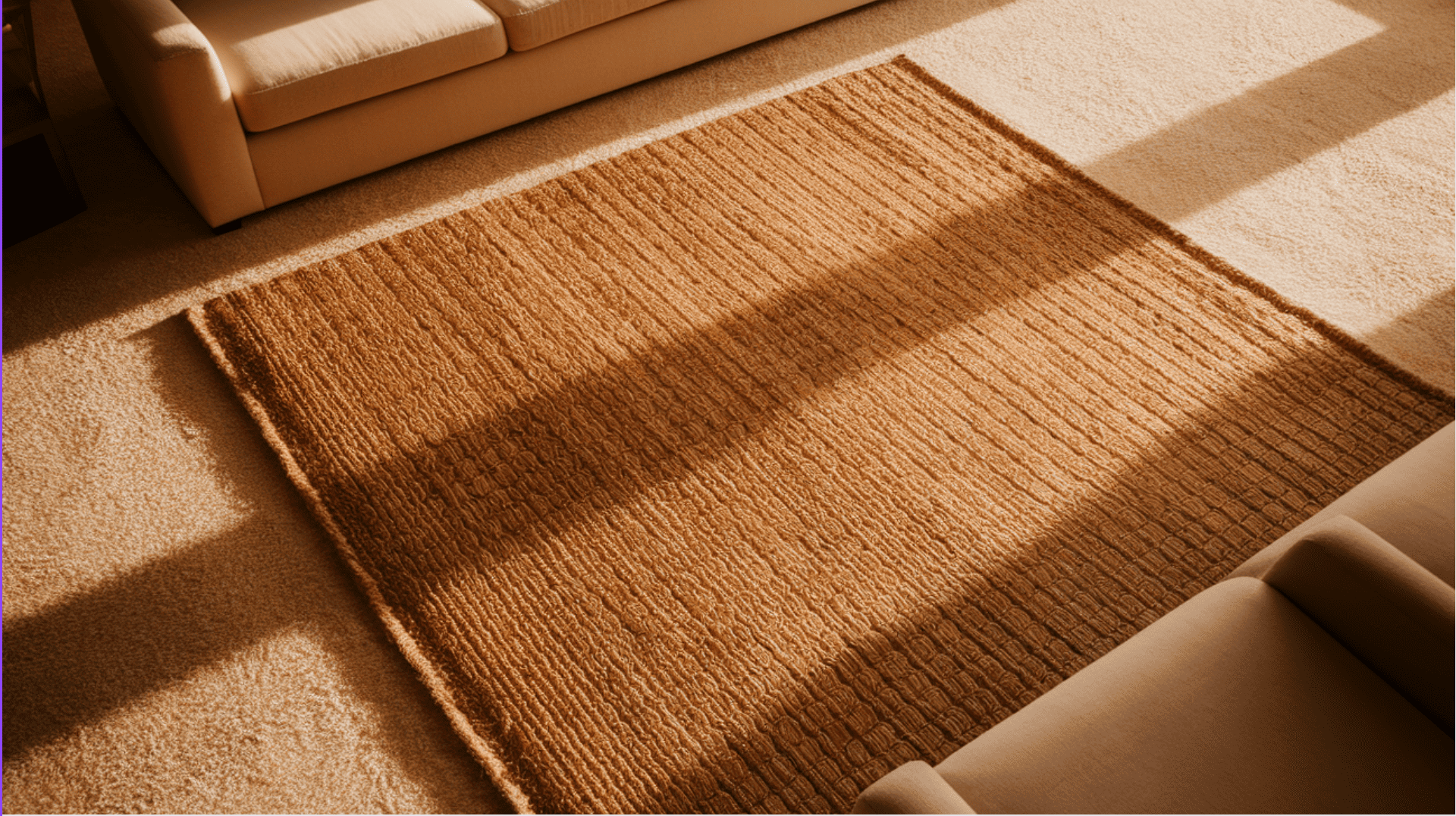
Not all rugs work well over carpet, so picking the right one matters.
The right materials, size, patterns, and thickness can greatly affect the appearance of your layered look.
1. Best Rug Materials that Work Over Carpet
Flat-weave rugs like jute and sisal stay put better on carpet and don’t add too much height.
Wool rugs feel amazing underfoot and resist crushing from furniture.
Low-pile cotton rugs work great too, giving you lots of color options without too much thickness.
2. Size Considerations
Bigger rugs usually look better when layered on carpet.
Try to leave at least 12-18 inches of carpet showing around the edges.
Super-small rugs can look awkwardly floating, while room-sized rugs create a more intentional, designer look.
3. Pattern and Color Selection Tips
Bold patterns can hide seams and slight bunching where the rug meets the carpet.
Consider colors that either complement or purposely contrast with your existing carpet.
Matching your rug color to your wall color often creates a pulled-together look that designers love.
4. Rug thickness guidelines
Thinner rugs (under ½ inch) work best over carpet and don’t create awkward height differences.
Avoid super plush or shaggy rugs as they can make the layered look too bulky.
Flat-weave or low-pile rugs create the most professional-looking finish when placed over carpet.
Room-by-Room Layering Ideas
Different rooms have different needs when it comes to placing rugs over carpet. Here are some easy, practical ways to make rug layering work throughout your home, no matter what the room is used for.
Living Room Rug on Carpet Styling
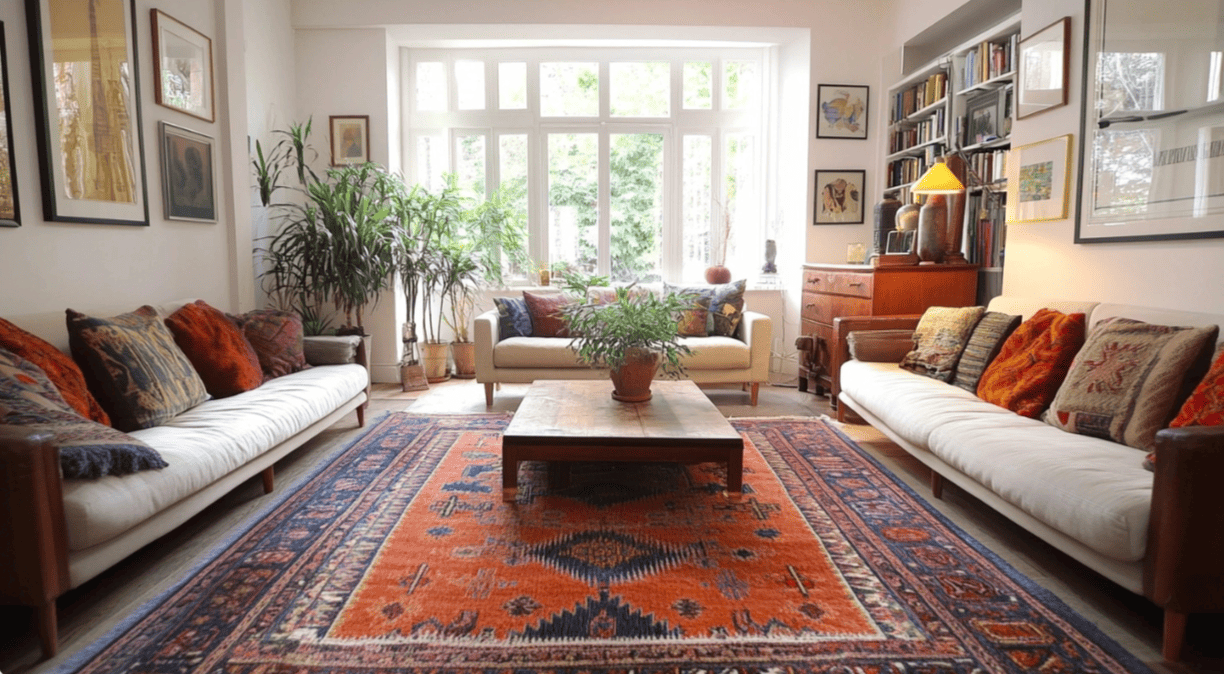
- Place a large rectangular rug under just the front legs of your sofa and chairs to create a conversation area that feels connected but not crowded.
- Try a bold geometric pattern rug over neutral carpet to add personality while leaving the outer edges open for traffic flow around furniture.
- Layer a smaller colorful rug over carpet diagonally under your coffee table for an unexpected twist that draws the eye to your central seating area.
Bedroom Carpet and Rug Combinations
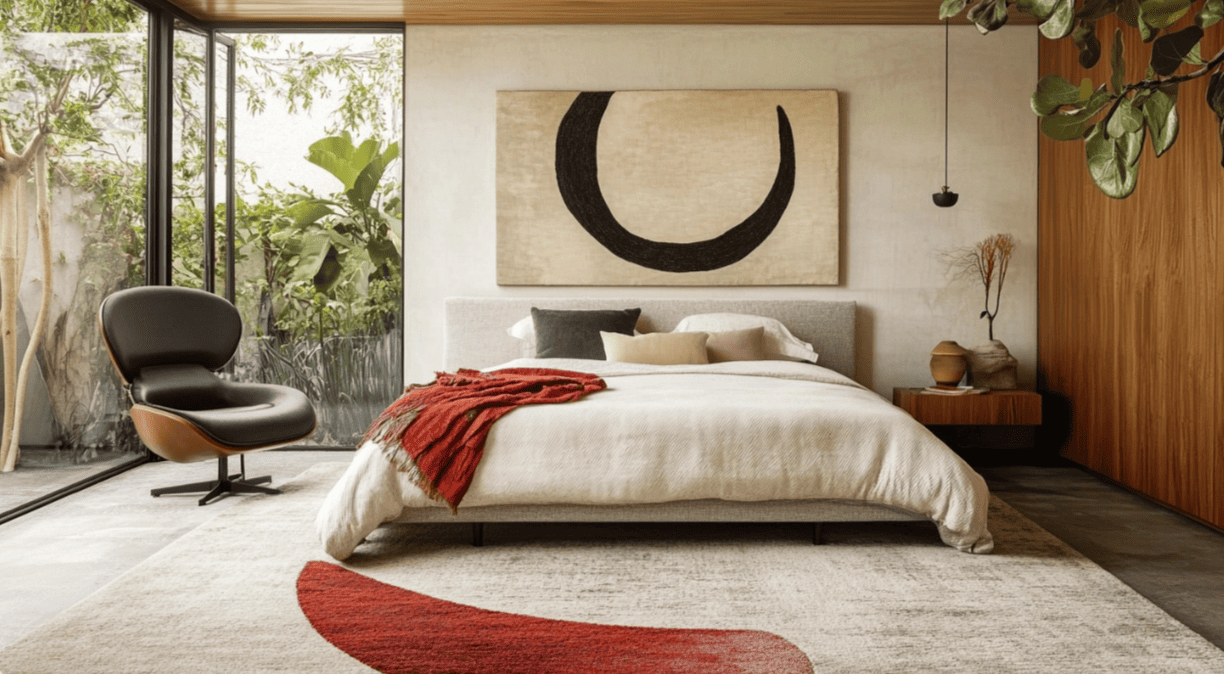
- Put a soft rug under the bottom two-thirds of your bed so you feel it when you get up, but don’t waste money covering areas hidden by the bed.
- Try round rugs on either side of the bed instead of the typical rectangle—they look fresh and modern while giving your feet a cozy landing spot.
- Use a colorful runner at the foot of your bed to add a pop of color and create a finished look without covering up too much of your existing carpet.
Dining Area Carpet Layering Solutions
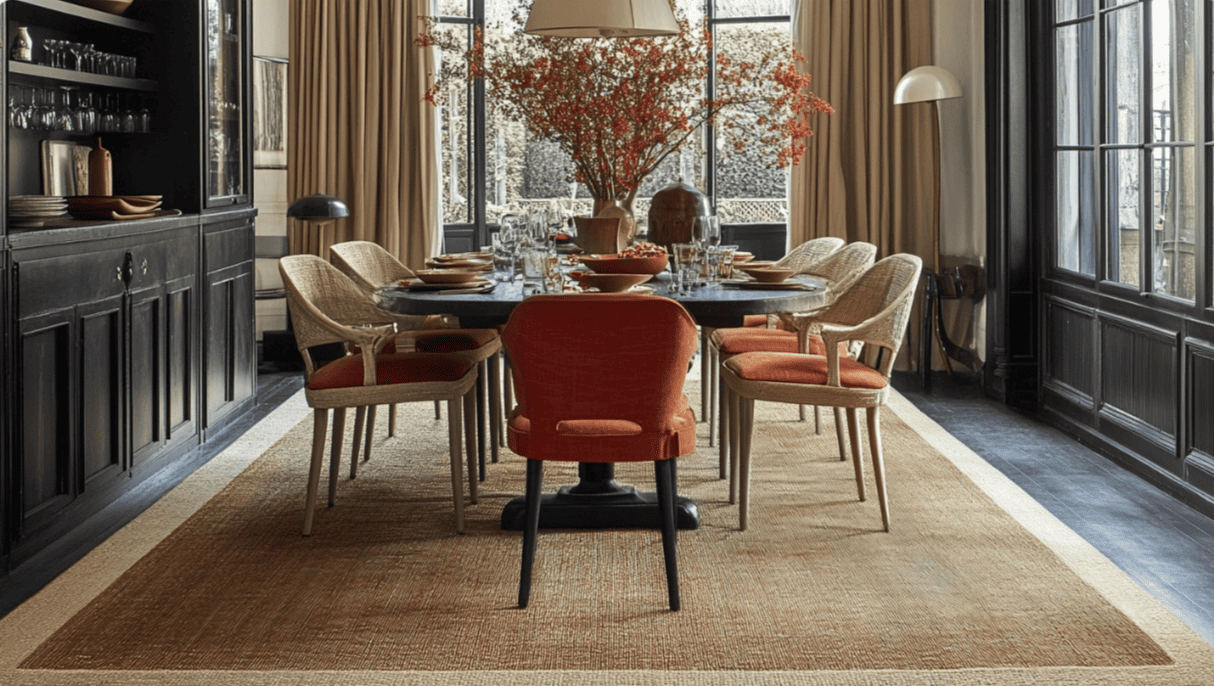
- Choose a rug at least 24 inches wider than your table so chairs don’t catch on the edges when people scoot in and out during meals.
- Look for flat, easy-to-clean materials like indoor/outdoor rugs that can handle food spills but still look nice over your dining room carpet.
- Try a washable rug under your dining table—they’re designed to go right in your washing machine when spills happen, which is perfect for carpet protection.
Step-by-Step Guide to Carpet Layering
Putting a rug on carpet doesn’t have to be complicated if you follow these simple steps.
With a little preparation and the right tools, you can create a layered look that stays in place and looks professionally done.
- Start by vacuuming your carpet thoroughly to remove any dirt, pet hair, or debris that could create bumps under your new rug.
- Choose a special non-slip rug pad made specifically for carpet-to-rug layering, regular rug pads meant for hard floors won’t work well here.
- Place your rug in position first without the pad to make sure it’s centered properly, then roll it back to put the pad in place underneath.
- After laying the rug over the pad, press down firmly around all edges, smoothing out any wrinkles or bubbles that might have formed.
- If needed, use special carpet-friendly rug tape at the corners, or try hook-and-loop fasteners (like Velcro) attached to both the rug backing and carpet for extra security.
Taking these steps will help your layered rug stay put even with kids running around or vacuum cleaners rolling over the edges.
A properly installed rug on carpet should look intentional and feel secure underfoot without constant adjustments.
Styling Tips from Interior Designers
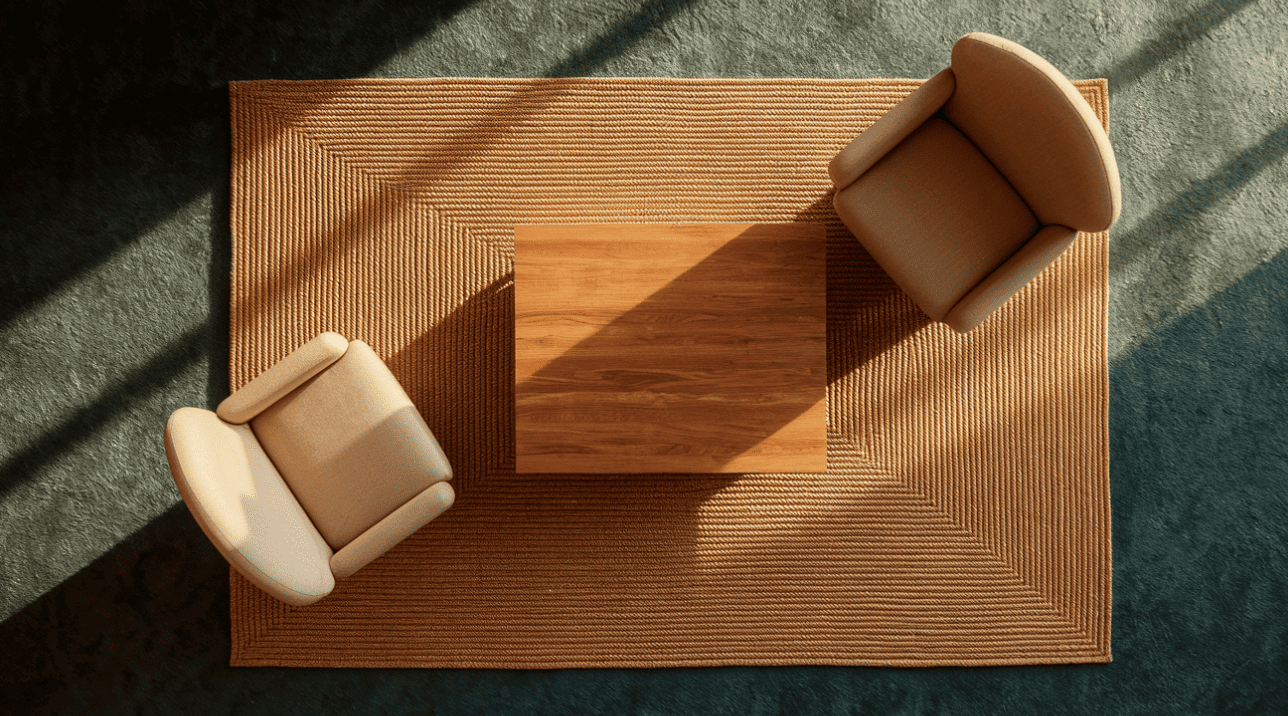
Professional designers have mastered the art of layering rugs on carpet to create magazine-worthy rooms.
Here are some of their best secrets for getting that polished, intentional look that makes layered rugs seem like they were always meant to be there.
- Mix textures for visual depth—pair a flat-weave jute rug over plush carpet, or try a subtle pattern rug on Berber carpet to create interesting textural contrasts that catch the eye.
- Choose colors that either perfectly coordinate with your carpet (for a subtle, sophisticated look) or deliberately contrast with it (for a bold, dramatic statement). There’s no in-between that works well.
- Position your rug so that at least the front legs of major furniture pieces sit on it, creating a unified conversation area that feels purposefully designed rather than randomly placed.
- To frame your rug properly, leave 18-24 inches of carpet visible around the edges – too small looks accidental, while wall-to-wall looks like you’re trying to hide your carpet completely.
- Switch out rugs seasonally to refresh your space—try lighter, brighter patterns in spring/summer and richer, cozier textures in fall/winter to keep your room feeling current all year long.
Don’t be afraid to experiment with these designer techniques in your own home.
The beauty of layering rugs on carpet is that you can easily try different positions and combinations until you find the perfect look for your space.
Common Mistakes to Avoid
Even design-savvy homeowners can make a few missteps when placing rugs on carpet.
Knowing these common pitfalls ahead of time can save you from wasting money on rugs that don’t work in your space.
- Too-small rugs: Are the number one mistake—a tiny rug floating in the middle of your carpet looks accidental and awkward rather than stylish. Always size up when in doubt!
- Excessive thickness: It can lead to tripping hazards and bulky transitions—super-thick, plush rugs on top of already-padded carpet create an unstable surface that furniture can sink into unevenly.
- Skipping the rug pad: Carpet-to-rug pads are essential for layered rugs, preventing constant straightening and adjusting, unlike hard floor pads.
- Improper furniture positioning: It creates an unbalanced look. Decide if furniture legs should be all on or all off the rug for a more professional, intentional design.
- Doorway placement problems: It can cause rugs to bunch up when doors open and close. To prevent frustrating wrinkles, leave at least 12 inches of space between your layered rug and any door.
Taking the time to avoid these common layering mistakes will make your rug-on-carpet look like a professional designer did it.
A properly sized, well-positioned rug with the right pad underneath will stay put and enhance your room for years to come.
Budget-Friendly Rugs for Layering Over Carpet
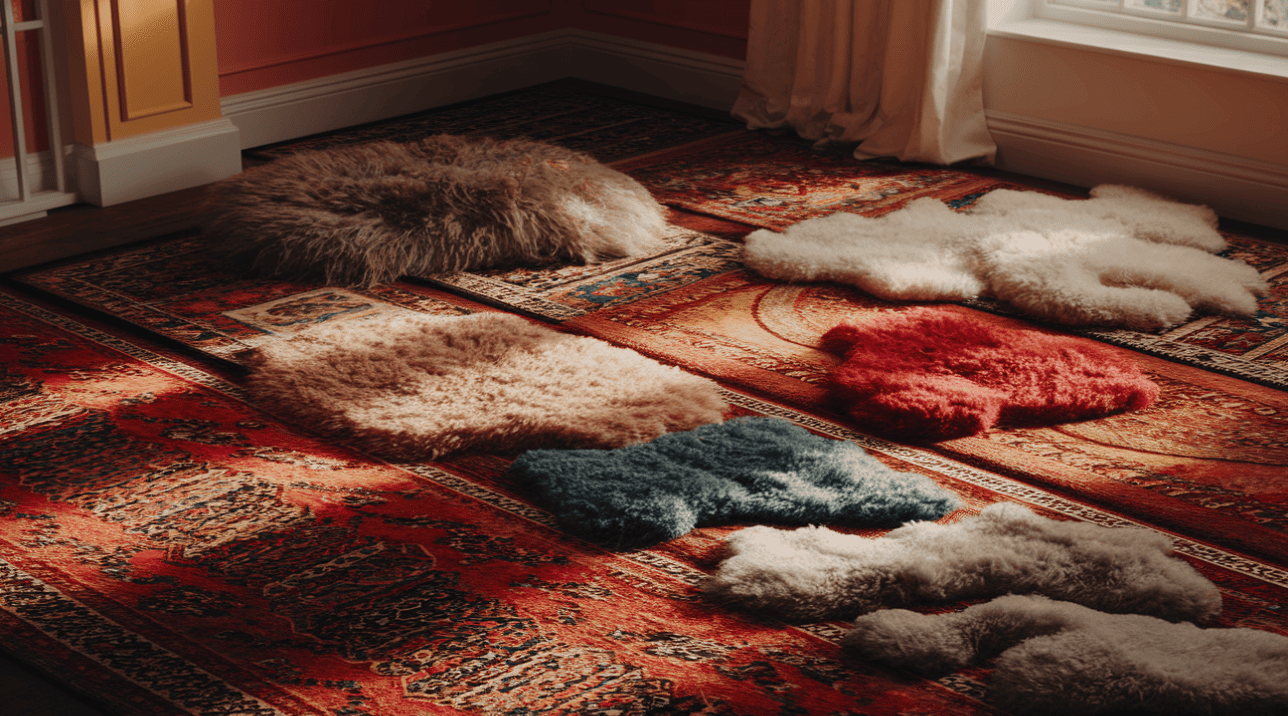
You don’t need to spend a fortune to try the rug-on-carpet trend.
Here are some affordable options that work beautifully when layered over existing carpet, with styles to match any home decor.
| RUG NAME | MEASUREMENTS | PRICES (USD) |
|---|---|---|
| nuLOOM Deadra Beige Area Rug | 5′ x 8′ | $68 |
| Ruggable Elin Stripe Latte Cream | 2′ x 3′ | $119 |
| Lahome Bohemian Floral Medallion Rug | 5′ x 7′ | $59 |
| Ashler Ultra Soft Faux Fox Fur Rug | 2′ x 3′ | $25.49 |
These budget-friendly options prove you can transform a room without emptying your wallet.
Remember to measure your space carefully before ordering and check customer reviews for feedback about how well these rugs perform when placed over carpet.
Layered Rug Maintenance and Cleaning Tips
Taking care of layered rugs isn’t much harder than caring for a single carpet, but there are a few special tricks to know.
These simple steps will keep both your carpet and rug looking great together for years to come.
- Use the hose attachment without the beater bar when vacuuming layered rugs to prevent bunching and pulling—gentle suction works best on the top layer.
- Always blot spills immediately with a clean, dry cloth, working from the outside toward the center to prevent the stain from spreading deeper into both layers.
- Lift and clean under your top rug every 3-4 months to prevent dirt from getting trapped between layers, where it can damage both surfaces over time.
- Rotate your top rug quarterly to distribute wear evenly and flip it once a year if the pattern allows—this simple habit can double the life of your layered setup.
Regular maintenance doesn’t take much time, but can make a huge difference in how long your carpet and rug combination stays looking fresh.
Just a few minutes of care each week saves you from having to replace either piece before its time.
Wrapping It Up
Layering a rug on carpet alters your home with minimal effort and maximum impact.
Remember to choose flat-weave or low-pile rugs, go bigger than you think, and always use a special carpet-to-rug pad to prevent sliding.
Take care of your layered look with gentle vacuuming and quick attention to spills.
The beauty of this design trick is its flexibility – you can easily change rugs seasonally or when your style preferences develop.
A well-placed rug enhances open spaces and personalizes your room, delivering professional results on any budget.
Ready to give your rooms an instant upgrade?
Grab a measuring tape and start planning your rug layering project today!
Comment below!
Have you tried putting a rug on the carpet?
If you’re interested in more informational home decor or interior designing content, feel free to click here and probe other blogs you might enjoy.

